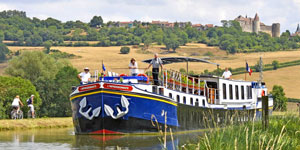Barging in France: Burgundy – Dijon
Dijon began as a Roman settlement (called Divio) located on the road from Lyon to Paris. This province was home to the Dukes of Burgundy from the early 11th through the late 15th centuries. Dijon was a place of tremendous wealth and power, and one of the great European centers of art, learning, and science.
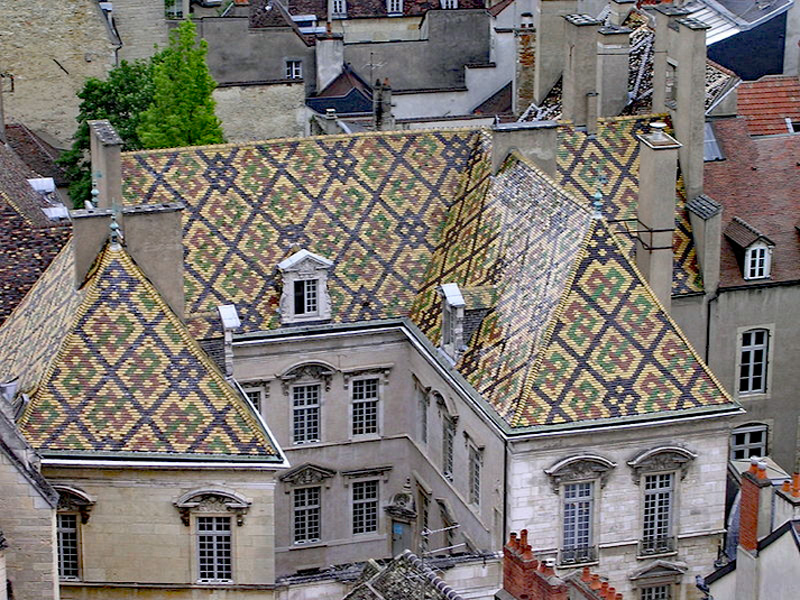
Dijon has one of the best preserved medieval centers in France. It is easy to walk and see the sites, with lots of pedestrian walking streets. It also boasts a large number of churches, notably Notre Dame de Dijon, St. Philibert, St. Michel Dijon Cathedral, the crypt of which, dedicated to Saint Benignus, dates from 1,000 years ago. Often overlooked by those searching for the ideal mini-break location, Dijon is so much more than just a condiment.
Les Halles de Dijon
Inspired by plans proposed by the Eiffel company in 1868, Les Halles de Dijon were built from 1873 to 1875 to the plans of the engineer Louis-Clément Weinberger. The building has an exterior structure inspired by classical architecture with a succession of arcades and columns with fluted shafts and capitals decorated with vine shoots. It comprises four pavilions articulated around two cross-shaped streets. The spandrels of the large arches are decorated with animal motifs and symbolic themes relating to the market: heads of deer, mouflon (rams), wild boar and ox, game and poultry, fish and eels, and medallions of Ceres, goddess of the harvest, and Hermes, god of trade and commerce.
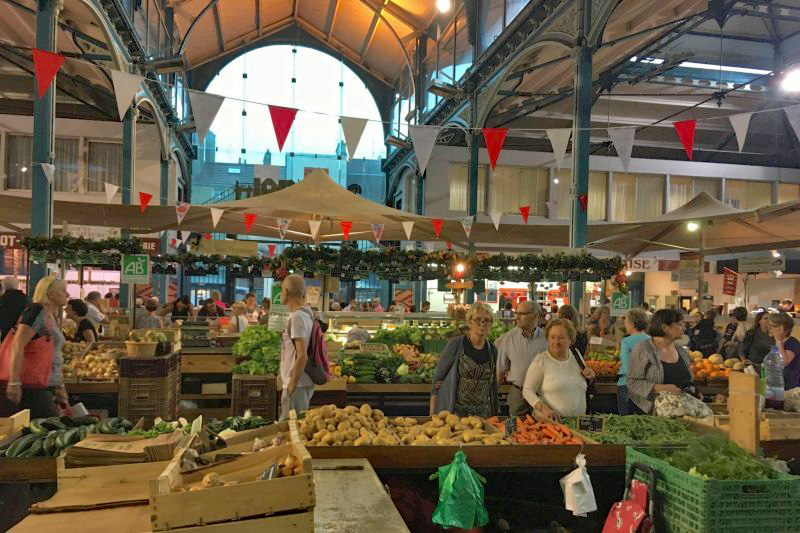
Towering above the historic streets of Dijon, Les Halles is a covered marketplace that's easily recognized by its 19th-century iron structure and glass windows. This building is home to the markets of Dijon, which are famous for selling an impressive variety of goods, from cheese and wines to books and records. You can find a huge variety of fresh produce at the markets, and barge chefs shop here to collect fresh vegetables, which they use to cook delicious meals for their guests. Whether you're searching for souvenirs to take home from your travels, or just a few treats to snack on during the day, Les Halles de Dijon will undoubtedly have everything you need.
Église Notre Dame de Dijon
Around 1230, work began on the Église Notre-Dame de Dijon (Church of Notre Dame of Dijon) at the very center of historic Dijon and is considered a masterpiece of 13th-century Gothic architecture. The church was classified as a Monument Historique in the List of historic monuments of 1840. The chapel of the Assumption, the sacristy, and the gallery that links them have been listed as Monuments Historiques since July 2002.
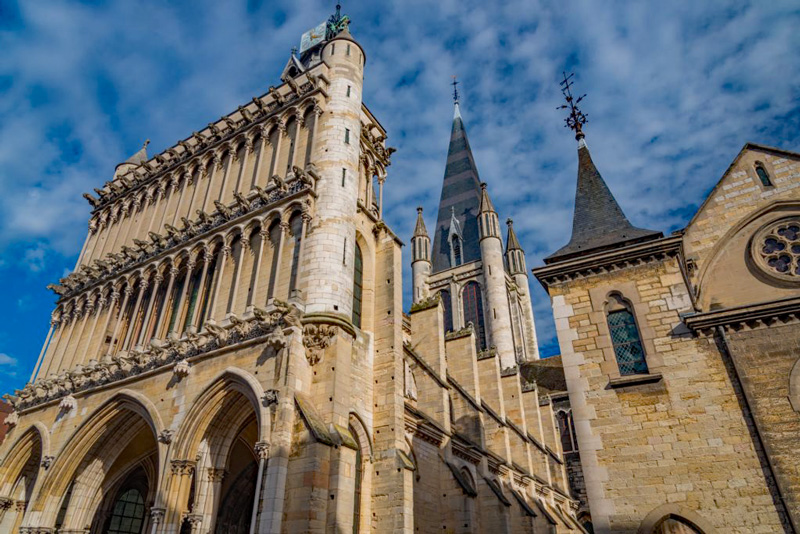
The 51 gargoyles (or grotesques) in the form of ornamental animals and monsters on the western façade are dummies, in that they are decorative rather than drain spouts. There are, however, functional gargoyles on the lateral walls of the church and the walls of the apse. Here's an interesting story... According to the account of the monk Étienne de Bourbon, the original gargoyles were in place for only a short time: they were removed around 1240, following a fatal accident. A usurer was killed on the church forecourt as he was about to get married: a stone figure representing a usurer became detached and fell on him. His colleagues organized the destruction of all the dummy gargoyles on the façade, except for one at the upper right corner that survived until the 1960s. The gargoyles at the sides and the back of the façade remain.
The church contains the statue of Notre-Dame de Bon-Espoir, formerly called the Black Madonna. This is thought to be the oldest statue of the Virgin Mary in France. The church's decorations also include two symbols of Dijon: the jacquemart (bell-striking automaton) and the owl.
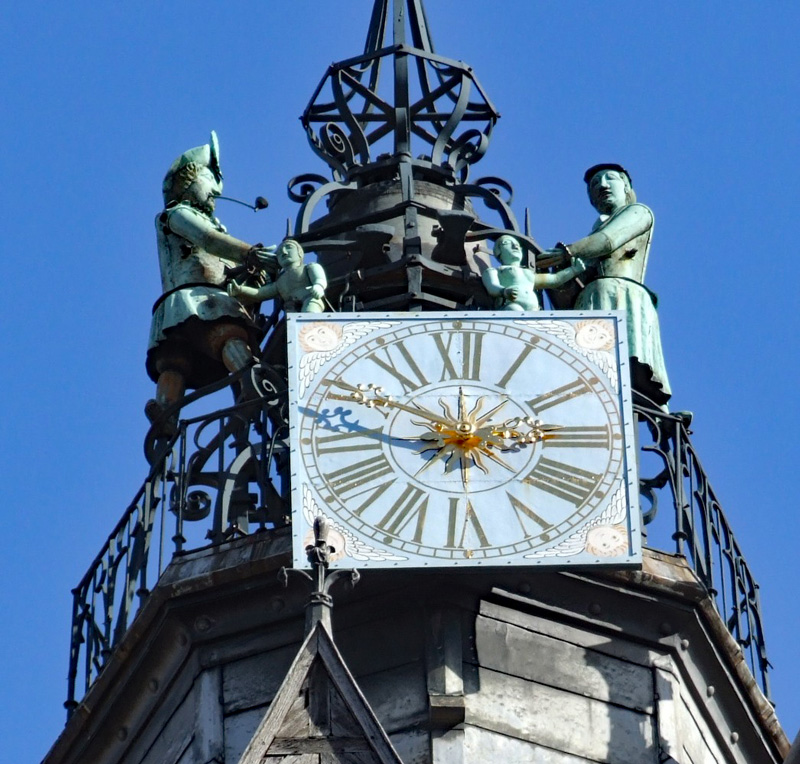
The clock with its jacquemart sits on a campanile rising from the base of the unbuilt south tower of the western façade. It has four metal automatons. Two of them, called Jacquemart and Jacqueline, sound the hours by striking a large bell with a hammer. The other two, their "children", Jacquelinet and Jacquelinette, strike the quarter hours, each on a small bell.
On the north side of the church is a chapel bordering on Rue de la Chouette (Owl Street), a pedestrian walkway. A corner of a buttress of this chapel bears a sculpted bird thought to represent an owl. The owl became worn over the centuries because of a superstition that luck would accompany anyone who stroked the bird with their left hand while making a wish. As a result, the sculpture lacks detail. The sculpture continues to serve as a symbol of the city. The office of tourism chose the owl in 2001 as its symbol for the Parcours de la Chouette (Owl Walk), a tourist trail around the historic centre. Twenty-two square plaques mark out the walk, each one bearing the image of an owl. And, the city's football club, Dijon Football Côte d'Or, has long used an owl as its emblem.
Le Moutarderie Fallot
Tasting the mustard of Dijon is practically a rite of passage when visiting this famous French city. There's simply no better place to experience Dijon mustard than in the boutique atelier of Le Moutarderie Fallot. Made from mustard seeds that have been grown in the local region, Edmond Fallot mustard was first established in 1840 and uses traditional methods to grind mustard seeds using stone.
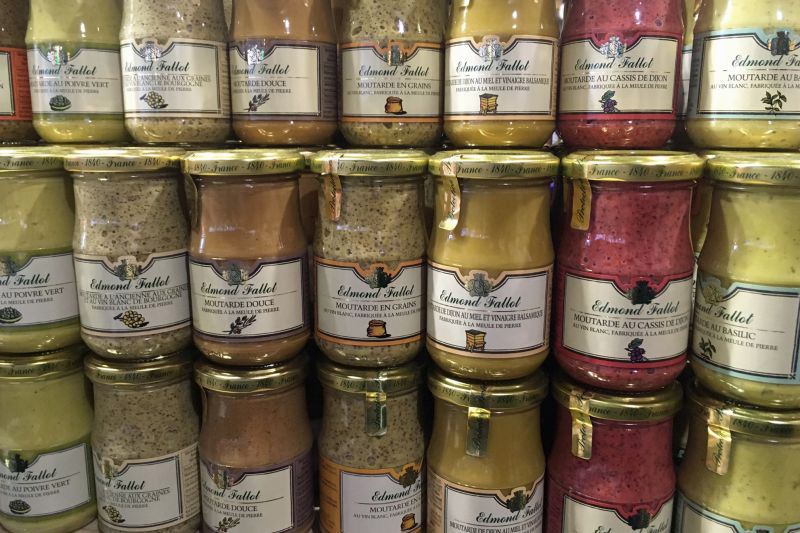
La Moutarderie Fallot is situated in Rue de la Chouette at the heart of the city, near Musée des Beaux-Arts de Dijon. Visit the "Mustard Bar" to get advice on your condiments from the Fallot team and take in the aesthetically pleasing boutique presentation of mustard jars. In true Dijon fashion, visitors can even fill their own stoneware jar from the mustard pumps in the store.
Palais des Ducs et des États de Bourgogne
At the heart of Dijon in the center of the old town is the Palais des Ducs et des États de Bourgogne. The Palace of the Dukes and Estates of Burgundy is one of the major sites of Dijon. "Estates" refers to a general assembly of the representatives of the important estates of the Duchy, which met every few years to legislate and govern. For centuries, it was the seat of Burgundian power. It is an architectural complex consisting of different parts dating from the fourteenth century (the Ducal Palace) to the most recent of the nineteenth century (façade of the Museum of Fine Arts).
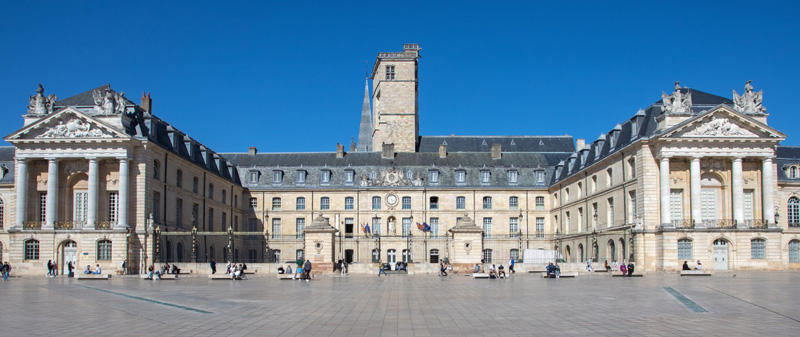
The Ducal Palace now houses the town hall, the fine arts museum, the municipal archives, and the tourism office of Dijon. The central area of the palace is a venue for functions and events. Visitors to the Ducal Palace can learn about the history of the Dukes of Burgundy and Palais des États. The Tour Philippe Le Bon, which stands over the Palace, is from the 15th century. You can climb the tower for an excellent view of Dijon from above.
Musée des Beaux-Arts
Don't miss an opportunity to visit the Musée des Beaux-Arts while you're at the Ducal palace. Occupying the opposite wing to the tourism office, Le Musée des Beaux-Arts is an impressive collection of artworks that was once owned by the Dukes of Burgundy. Though the collection has now grown to include archaeology and textiles, its collection showcases the historic wealth of Dijon and the wider Burgundy region.
With over 100,000 items in the collection, it would be impossible to see everything at the Musée des Beaux-Arts. Visitors can see sculpture, tombs, triptychs, and paintings, spanning a time period from antiquity up until the twenty-first century. The collection even includes an Ancient Egyptian mummy. Art-lovers shouldn't miss the works of Monet, Pissaro, and Tissot.
Musée Rude
Situated in the former church of Saint Etienne since 1947, Musée Rude displays the work of the Dijon-born sculptor, François Rude (1784-1855). The museum displays life-size plaster casts acquired by the Dijon municipality between 1887 and 1910, which are major works by the artist exhibited in other museums in France (including the Louvre in Paris). Most of the sculptures are pertaining to mythology and history. The museum also exhibits numerous paintings and sketches.
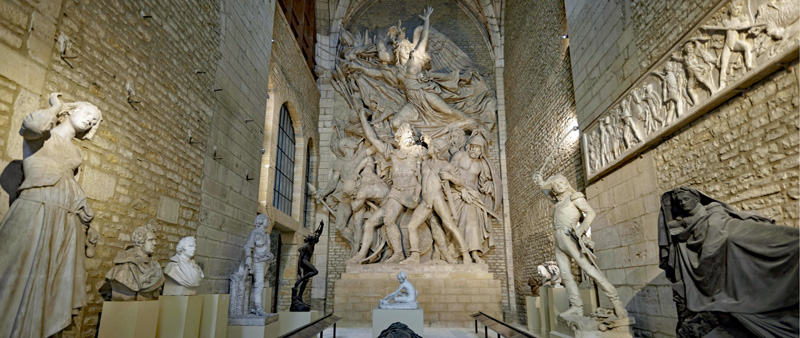
Beautifully exhibited within the former transept is Rude's most famous work, Départ des Volontaires de 1792 (also titled La Marseillaise). Captured in plaster cast, the version in the Musée Rude is a recreation of the work seen on l'Arc de Triomphe in Paris. Other sculptures by Rude on display here, and include effigies, busts, a representation of Napoleon Bonaparte awakening to immortality, and also Mercury attaching his wings.
In the former choir, you can see substructures of the 11th-century crypt, as well as a portion of the Gallo-Roman wall dating from the 3rd century.
Sample Crème de Cassis at L'Heritier-Guyot
L'Heritier-Guyot was one of the first distilleries to be founded in the Dijon region and its boutique is a must-visit for cocktail lovers. The distillery creates Crème de Cassis using the traditional methods first introduced by Louis-Baptiste L'Héritier when it was founded in 1845. With more than 2 million bottles of L'Heritier-Guyot cream liquor sold per year in France alone, it is a market leader in its field.
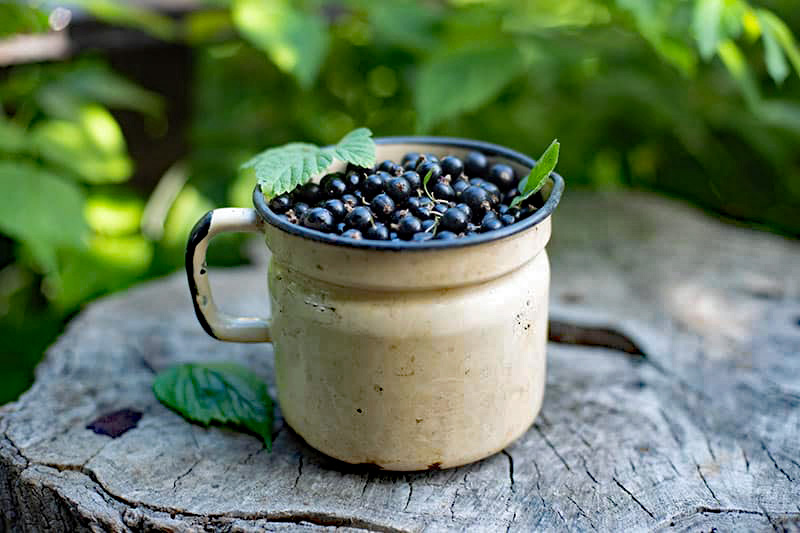
Made by macerating fresh black currants grown in Burgundy, L'Heritier-Guyot Crème de Cassis is made in Dijon and has an alcoholic strength of around 15%. Stop in at the Dijon boutique to taste some of the many types of cream liquor on offer, choosing from flavors like amaretto and triple sec.
Do you know, the Kir Royale cocktail is made with Crème de Cassis and champagne? We have a hotel barge named Kir Royale that offers barge cruises in Champagne region of France.
Musée de la Vie Bourguignonne
Located in the Bernardines monastery of Dijon, the Musée de la Vie Bourguignonne Perrin de Puycousin displays ethnographic rural objects collected at the end of the 19th century by M. Perrin de Puycousin, a celebrated folklorist. Thanks to him, you will find a wealth of furniture, household implements, regional costumes, all of them on display in a true-to-life context.
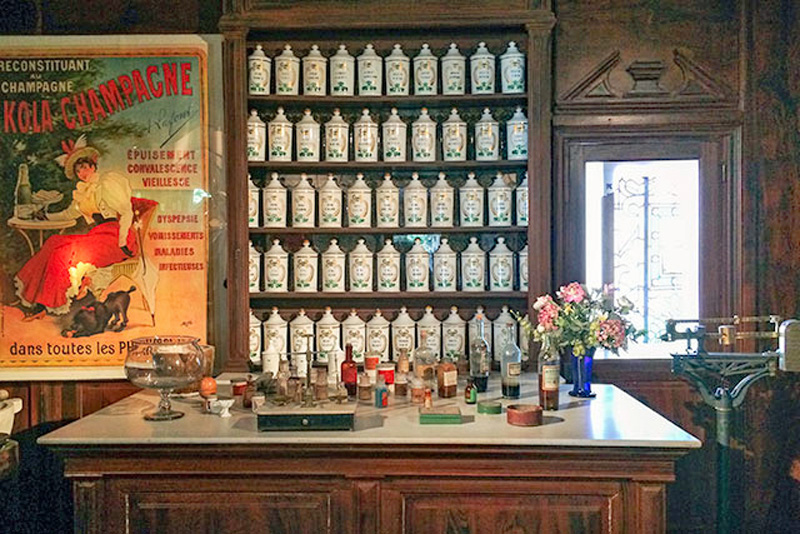
In addition, life-size shops which used to be located in the streets of Dijon have been faithfully replicated including a chemist, a grocer, a butcher, a clockmaker, a toyshop, and more. Original posters and signs which used to adorn the walls of Dijon advertize former local industries and present-day Burgundian specialties. Visitors can't miss the special section devoted to the history of mustard... Finally, detailed explanations concerning the various local crafts based on the geological environment, show the visitors how craftsmen used to work on stone, clay, and wood. Not only do these elements shape the nearby landscapes but they are also to be noticed in architecture, every-day objects, and furniture.
With so much of the region's history displayed here, it's a great way to experience the heritage of Dijon and the wider Burgundy region. Visiting Dijon's Musée de la Vie Bourguignonne is like walking back through time.
French Hotel Barge L'Impressionniste
Experience Dijon in supreme comfort with a barge cruise on French Hotel Barge L'Impressionniste. With extravagant cuisine and Burgundy wine served on board with five-star hospitality, they are the perfect choice to discover Dijon.
L'Impressionniste
Southern Burgundy: Canal du Bourgogne
Up to 12 guests
Private charters & Cabin cruises
Themed cruises:
Culinary, Family, Golf, Wine

